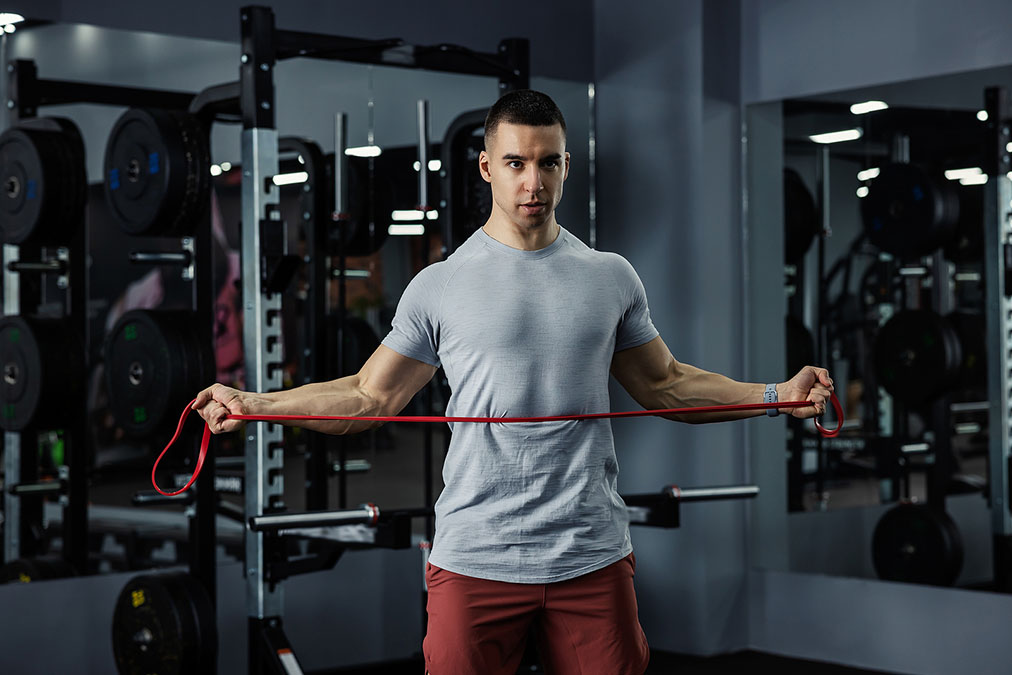 Doctors have long recommended that people with osteoporosis eat healthily and exercise to minimize the damage this disease does.
Doctors have long recommended that people with osteoporosis eat healthily and exercise to minimize the damage this disease does.
What type of exercise should you do to treat osteoporosis?
A new study in the Journal of Orthopaedic Surgery and Research answers this question in a surprising way.
At this stage, scientists aren’t sure how muscle strength, muscle size, and bone density are related. Some studies have found that stronger and bigger muscles are linked to denser bones, but others have found no connection.
Most research on muscle strength has focused on the hand and arm muscles. The authors of the new study thought it was more important to look at the lower body muscles because they are used more in daily activities. Furthermore, when those muscles get weak, people can fall and hurt themselves.
To explore how lower body muscle strength and size could predict bone density, they analyzed data from the National Health and Nutrition Examination Survey collected between 1999 and 2002.
The study considered 2,165 people who completed health exams and answered questions about their health and nutrition. People were excluded if they had missing data or had certain diseases such as cancer, thyroid disease, or diabetes.
The researchers measured the participants’ muscle strength by seeing how hard they could push with their knees. They measured muscle using a scanner that probed the muscles in their arms and legs. They used X-rays to assess bone mineral density.
The study yielded the following findings:
-
1. The subjects with the highest lower-body muscle strength had the densest bones.
2. Those with high scores in the appendicular skeletal muscle index (a measure of muscle mass) had high bone mineral density.
3. People with higher bone mineral density in the lumbar spine had more muscle strength and mass.
4. Unsurprisingly, participants with higher bone mineral density were usually younger, male, had more money, drank less alcohol, were more active during their free time, and consumed more food and caffeine.
Therefore, to prevent bone diseases such as osteopenia and osteoporosis, it is important to exercise your muscles to build their strength and mass.
Exercise programs often focus on aerobic training, but this study shows that resistance training is equally important and probably becomes even more so as we age.

 Overcoming IBD
Overcoming IBD Multiple Sclerosis
Multiple Sclerosis Banishing Bronchitis
Banishing Bronchitis Gum Disease Gone
Gum Disease Gone Overcoming Onychomycosis
Overcoming Onychomycosis Neuropathy No More
Neuropathy No More The Prostate Protocol
The Prostate Protocol Brain Booster
Brain Booster
 Ironbound
Ironbound
 Solution for Shingles
Solution for Shingles
 The Bone Density Solution
The Bone Density Solution
 The Ultimate Healing Protocol
The Ultimate Healing Protocol
 The Parkinson's Protocol
The Parkinson's Protocol
 The Chronic Kidney Disease Solution
The Chronic Kidney Disease Solution
 Overthrowing Anxiety
Overthrowing Anxiety The Fatty Liver Solution
The Fatty Liver Solution The Hypothyroidism Solution
The Hypothyroidism Solution
 The End of Gout
The End of Gout The Blood Pressure Program
The Blood Pressure Program
 The Oxigized Cholesterol Strategy
The Oxigized Cholesterol Strategy
 Stop Snoring And Sleep Apnea Program
Stop Snoring And Sleep Apnea Program
 The Arthritis Strategy
The Arthritis Strategy The Vertigo & Dizziness Program
The Vertigo & Dizziness Program The 3-Step Diabetes Strategy
The 3-Step Diabetes Strategy Hemorrhoids Healing Protocol
Hemorrhoids Healing Protocol The Erectile Dysfunction Master
The Erectile Dysfunction Master Weight Loss Breeze
Weight Loss Breeze The IBS Program
The IBS Program The Insomnia Program
The Insomnia Program The Migraine and Headache Program
The Migraine and Headache Program The Neck Pain Solution
The Neck Pain Solution The Menopause Solution
The Menopause Solution The Ejaculation Master
The Ejaculation Master The TMJ Solution
The TMJ Solution The Acid Reflux Solution
The Acid Reflux Solution The Fibromyalgia Solution
The Fibromyalgia Solution The Psoriasis Strategy
The Psoriasis Strategy